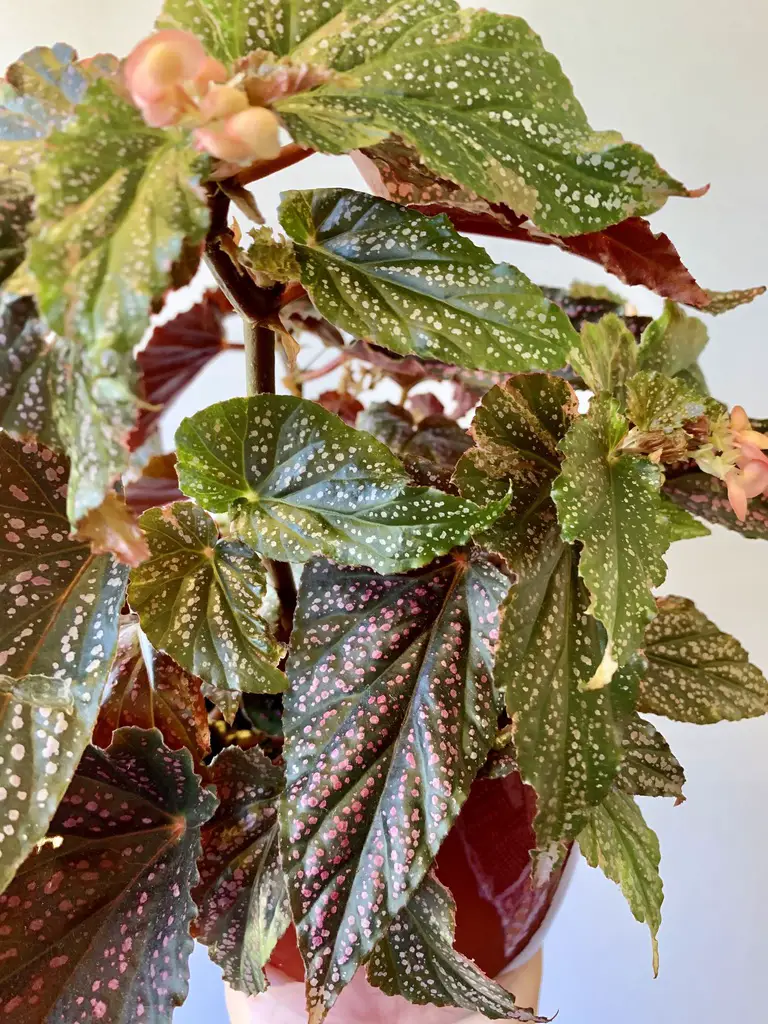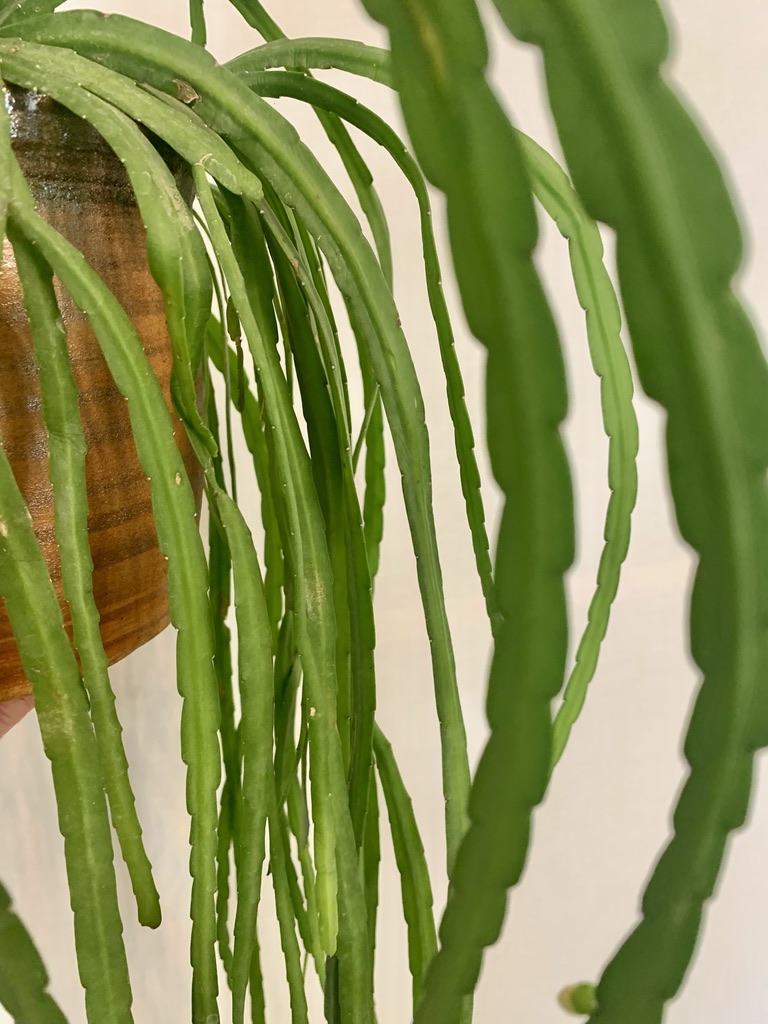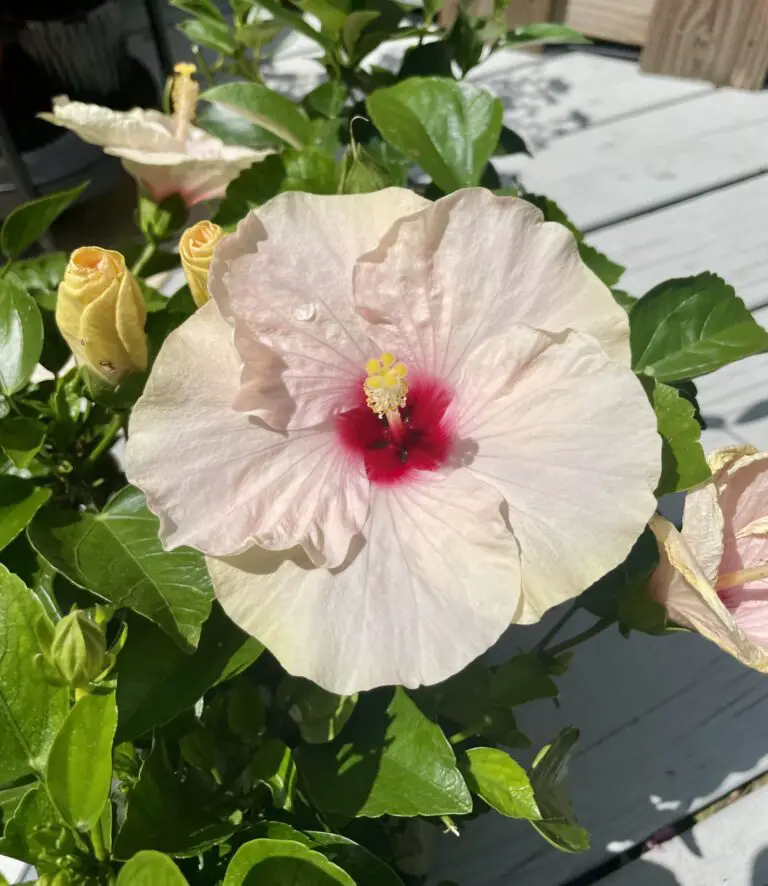Begonia Maculata is known by many names; Polka Dot Begonia, Angel Wing Begonia, Pink Polka Dot Begonia, or more generally just Cane Begonia. It is characterized by showy asymmetric leaves, displaying a crinkled surface splattered with beautiful polka dots throughout. It’s an ever-popular houseplant due to its foliage and ease of care. With the right conditions, you too can keep this plant thriving in your home.
Polka Dot Begonia care summary: Begonia Maculata requires a spot receiving bright indirect light (the brighter the better), a well-draining substrate providing aeration, and temperatures between 65 F and 85 F. They also prefer higher humidity levels and benefit from occasional pruning which promotes robust, full growth.
Below you will find a full care guide to keep your Begonia Maculata thriving and healthy in your home. Following the care, requirements are some tips and tricks on how to avoid problems and pests on this beautiful plant. A quick propagation-How To is also included.
About Begonia Maculata
Botanical Name: Begonia maculata
Common Name: Polka Dot Begonia, Angel Wing Begonia, Cane Begonia
Family: Begoniaceae
Origin: Central and South America
Known widely for their striking asymmetrical foliage, Polka Dot Begonia are becoming more popular by the day amongst houseplant enthusiast.
In addition to their beautiful appearance, given the right conditions, they are also easy to care for. Like many other plants, one of the most common problems is root rot, mostly caused by overwatering, or a substrate that retains too much moisture.
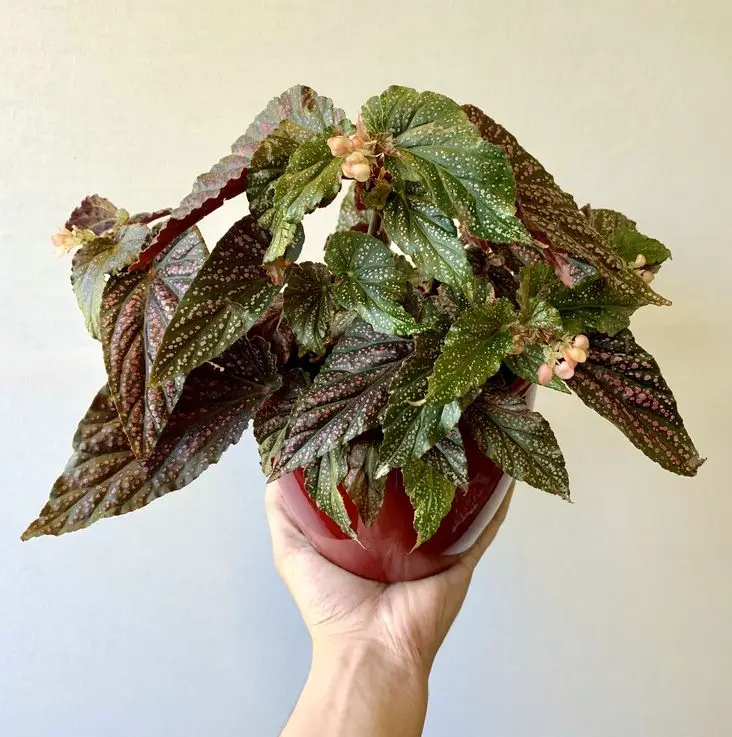
Light Requirements For Begonia Maculata
The ideal spot for your Begonia Maculata will receive bright indirect light. Near south, east, or west-facing windows is best. Make sure to keep your Begonia slightly back and away from strong direct sun rays as these can burn the plants’ foliage. Shoot for strong light without much direct exposure.
I’ve found my Polka Dot Begonia can handle a bit of early morning sun in an east-facing window without any problems. So if you have a spot that receives a bit of early morning sun that will also suit this plant.
When it comes to lower light conditions Begonia Maculata isn’t a good candidate. If your plant is receiving too little light you may notice less vibrant colors, followed by dropping of leaves and smaller, less vibrant new growth. If you notice these symptoms, find a brighter spot for your plant.
On the other hand, if you notice brown, scorched spots on your Begonia it is a sign they are receiving too much light. Scorched leaves are almost always caused by too much direct sun exposure, so watch your plant throughout the day to see how much sun it is receiving and move it accordingly if necessary.
A quick note: the same spot may receive no direct sunlight during some parts of the year and many hours of direct light during other periods so it’s best to check the lighting conditions periodically.
When To Water Begonia Maculata
Polka Dot Begonias prefer a consistently moist substrate. This means never allowing the soil to go completely dry. A good rule of thumb is to give your Begonia a watering when the top two or so inches of soil have gone dry.
Although these plants require consistently moist soil they are prone to root rot, it’s important to have a well-draining, airy substrate to provide moist but not soggy conditions for your Maculata. I also recommend a terra cotta pot so that there is never too much moisture in the substrate.
If your plant isn’t getting enough water you will notice wilting leaves accompanied by dry, brown leaf tips. Contrary, if the plant has too much water the leaves will yellow and droop, if you suspect overwatering try to allow your soil to dry almost completely before the next watering cycle.
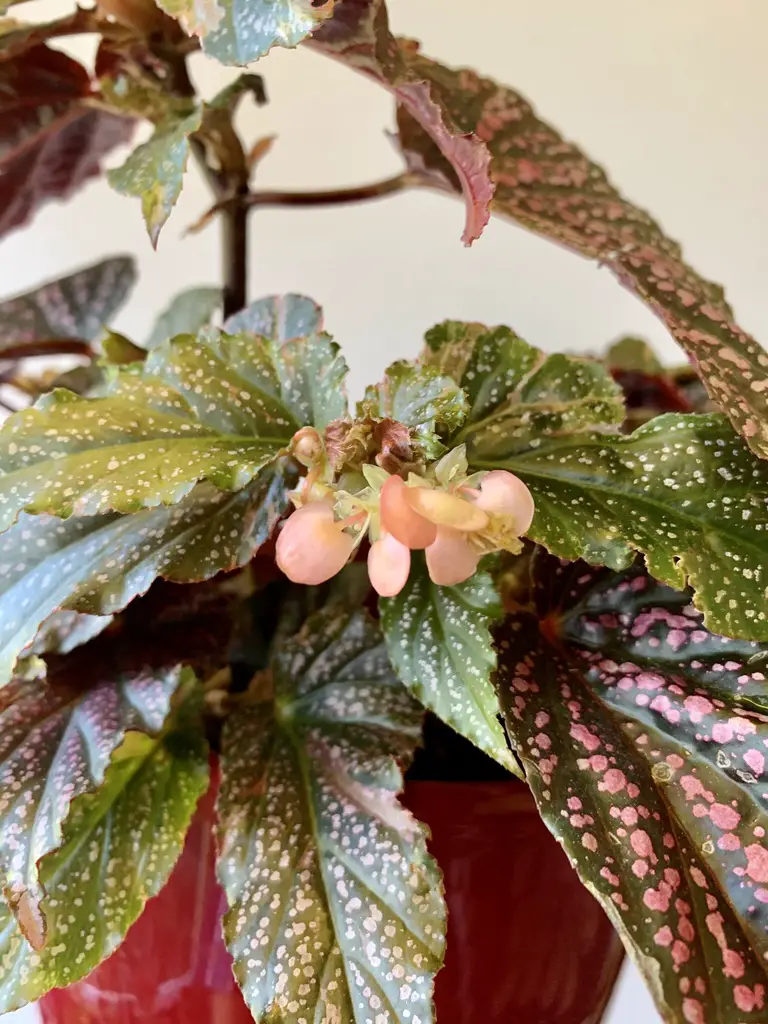
Begonia Maculata Humidity & Temperature
Begonia Maculata prefers a humid environment. For ideal growth, it is best to have your plant in an area with at least 40% humidity, if you can provide higher levels that is even better.
The best way to provide higher humidity levels in the home is by grouping a number of plants in a small space. A humidifier can also provide a humid space for your tropical plant species to thrive. Alternatively, if your bathroom has adequate light, these rooms usually have higher humidity levels due to showering, etc.
When it comes to temperature, Maculatas like it warm, their ideal temperature range is between 65 F and 85 F. They can withstand temperature dips as low as 55 F but anything lower will lead to a speedy decline of your plant.
Polka Dot Begonia Toxicity
Begonia are known to be toxic to all pets, including cats and dogs. If any part of the plant is consumed, monitor your pet and contact your local veterinary office if you see symptoms of poisoning.
Begonia Maculata is also toxic to humans, the sap can irritate the skin, so propagate and repot this plant with caution.
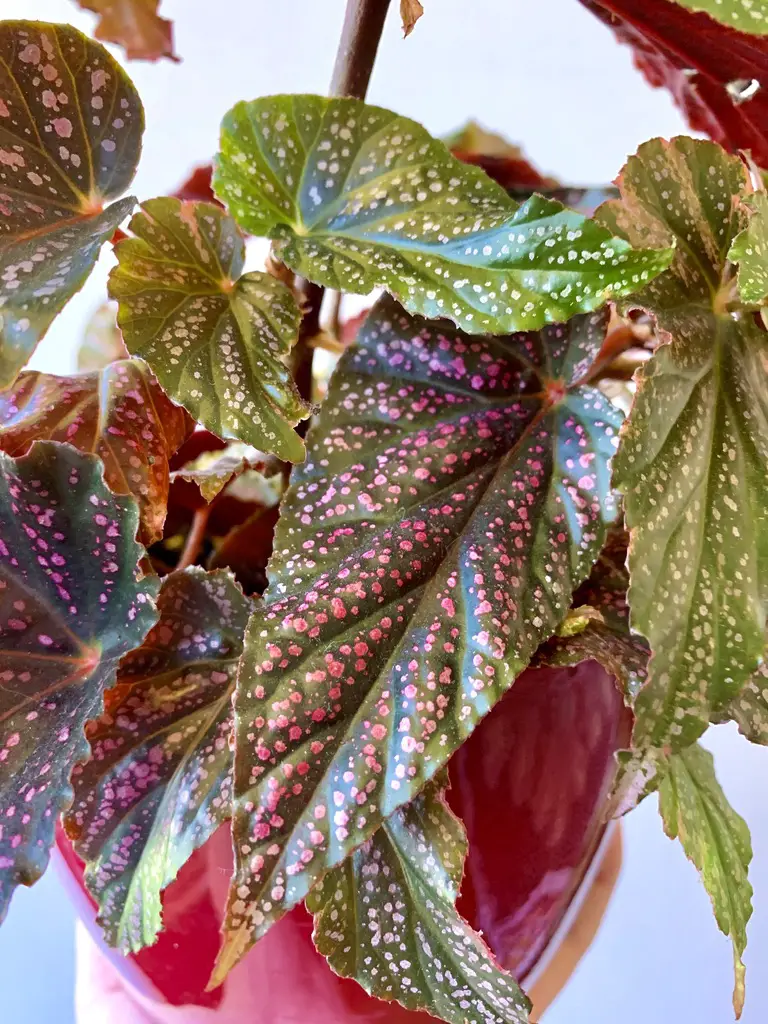
Begonia Maculata Pruning
Begonia tend to grow tall and leggy rather than bushy and full if left to their own devices. If you want a full-looking Maculata it is best to regularly trim new growth once it becomes too leggy.
To prune simply cut about half of an inch above a growth point (where a leaf has emerged). This will promote another branch to develop from the node below the cut, making for a more full plant, rather than a tall leggy one.
Periodical trimming every few weeks is ideal, alternatively, you can undertake significant pruning twice a year and use the cuttings to propagate and start a new Begonia Plant.
How To Propagate Begonia Maculata
The best time to propagate your Maculata is right after pruning, this plant is very easy to propagate and even small cuttings can grow into full plants fairly quickly.
The easiest way to propagate is by placing the cut end of your Begonia cuttings in a vessel of water. It is best to use smaller vessels and if possible place more than one cutting per container, as the cut stems release rooting hormones.
Place your cuttings in a warm, humid spot and top up the water regularly. After a few weeks to a month or so, your cuttings should produce enough of a root system to transfer them to soil.
To give your cuttings the best chance once moved to soil, provide them with a warm and humid environment, after a few more weeks you should have fully established Begonia Maculata plants.
